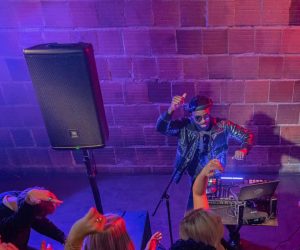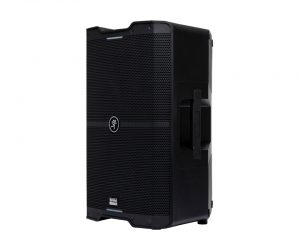
The Professional Voice: Tchad Blake
The victory of the DAW, and corresponding decimation of the cost of pro audio equipment was one of the main factors behind the collapse of the commercial studio industry. This whirlwind of closing studios, lowering recording budgets, improving digital audio sound quality and endless options and effects at the press of a button, turned the worlds of all engineers, mixers and producers upside down. Throughout this issue, Paul Tingen asks nine of the world’s leading studio practitioners to elaborate on what has changed for them since 1998, homing in on the pieces of gear they consider to have been game changers, and the working methods they use today, which they didn’t in 1998.
TCHAD BLAKE
Elvis Costello, Peter Gabriel, Pearl Jam, Tom Waits, Sheryl Crow, T-Bone Burnett, Travis, Crowded House, The Pretenders, Los Lobos, Suzanne Vega, Bonnie Raitt, Al Green, Tracy Chapman, The Black Keys.
Blake, a five-time Grammy winner, likes to use and abuse all manner of analogue gear and real-life objects in unorthodox ways. Given Blake was the archetypal analogue mixer, his decision a few years ago to operate almost entirely in-the-box was most surprising. Blake is an American, but currently resides in Wales in the UK, where he works in his home studio, called Full Mongrel. Full Mongrel’s gear list gives a good indication of where he’s at, and the analogue gear he still finds irreplaceable: ProTools HD 3 V8.0, Linn 328A powered monitors, Daniel Audio Labs NF12 powered monitors, ICON D Control, Eventide H3000SE, Tech21 Classic SansAmp, Empirical Labs Distressor EL6, SpectroSonics 610 compressors, Shure Level Loc compressors, Hughes SRS AK100, Little Labs HQS REV2 mic preamp, Aguilar DB 900 DI, Studio Projects B1, Shure SM57, AKG C414, Apogee MIC, lots of guitar pedals, and too many plug-ins to list.

Tech 21 changed my life in the early ’90s with the SansAmp and did it all over again with the SansAmp PSA-1 plug-in
Blake: “Many of my clients could no longer afford proper studio rates and I was losing work because of that. I now have an affordable mix room at home. It’s amazing. I’m 99.8% in-the-box, as opposed to mixing off tape through a vintage API console at The Sound Factory or the very large SSL at Real World Studios [in 1998]. The 0.2% represents instruments I add or pedal-style effects I use. Not that plug-ins aren’t good enough, I just like to change things up a little, alter the body language.
GAME CHANGERS
PROTOOLS HD,
TECH 21 SANSAMP,
LINN 328A
“First of all there’s ProTools HD. It was the first ProTools I liked the sound of. Tech 21 changed my life in the early ’90s with the SansAmp and did it all over again with the SansAmp PSA-1 plug-in. It’s in every mix I do. Finally, the Linn 328A speakers fit me like a glove. The Linns allow me to monitor at quiet to medium (45-75dB), almost conversational levels, without any low or sub frequency loss; and they reproduce subs without a dedicated sub woofer. They’re also the most low maintenance monitors I’ve ever encountered.
“As for new mixing techniques I’ve learned in the past 15 years, I usually keep levels low within the box and don’t overdrive plug-ins. One example would be my stereo bus comp/limit set up. Instead of using one ‘unit’ to smash I have four to five very different compressor/saturation-style plug-ins all doing a little bit. To my ear, when one unit is pushed hard to get the sound I’m looking for, it accentuates artifacts I find undesirable, like harsh, mid-range jagged waveforms. Using different plug-ins pushed in different amounts spreads the undesirables out frequency wise, so they’re not a problem for me. That’s my theory and I’m sticking to it. Plug-ins just don’t overdrive like analogue, but I can still get what I want with a bit of experimenting and mix ’n’ match. Finally, I love manual de-essing using DAW automation.”
















RESPONSES